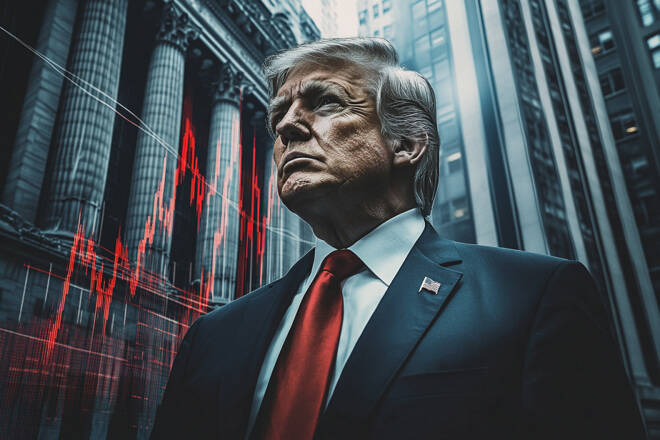Advertisement
Advertisement
Dow Industrials on Watch as Trump’s Tariffs and Fed Meeting Threaten Market Shakeup
By:
Key Points:
- New tariffs and the Fed’s July 29–30 meeting could reshape the outlook for industrial stocks heading into August.
- Trump-backed tariffs starting August 1 will hit global supply chains, pressuring firms like Caterpillar and 3M.
- Lockheed Martin is up 30% YTD, benefiting from defense spending largely immune to global trade instability.
Industrial Stocks Face Pivotal Moment as Tariff Deadline and Fed Meeting Converge
August 1 is shaping up to be a key inflection point for U.S. industrial stocks, as a pair of major policy events converge in a way that could reshape the sector’s short-term outlook.
New tariffs are set to take effect that day, while the Federal Reserve will meet just two days earlier to determine the path of interest rates.
For investors, this period could mark a turning point in identifying which industrial names are best positioned to weather policy uncertainty.
Tariffs and Monetary Policy Set the Stage
The announcement from Commerce Secretary Howard Lutnick reaffirming August 1 as a firm start date for new tariffs adds immediate pressure on globally integrated industrial firms.
These tariffs will apply regardless of ongoing trade negotiations, signaling an aggressive stance on reshoring.
At the same time, heightened political scrutiny over Fed policy is adding volatility to interest rate expectations, just as manufacturers face potential cost pressures and demand shifts.
Mixed Impact Across the Sector
The policy developments present a complex picture for industrials. Companies with deep global supply chains—such as Caterpillar and 3M—could face margin pressure from rising input costs.
However, firms positioned to benefit from domestic manufacturing expansion may see stronger demand over time. This creates a challenging environment where adaptability and strategic positioning will be key.
Early Trends Indicate Diverging Performance
Some companies have already started to outperform in anticipation of structural changes.
Lockheed Martin, for example, is up 30% this year, bolstered by defense-related spending that remains largely insulated from global trade tensions.
GE Vernova has surged nearly 70%, driven by demand for grid infrastructure and energy capacity tied to AI-driven growth.
On the other hand, transport and logistics players like UPS and FedEx have underperformed amid declining international shipping volumes. Airlines also face headwinds from higher fuel costs and potential restrictions.
Investment Outlook
The combination of the Fed’s July 29–30 policy meeting and the implementation of tariffs on August 1 makes the next two weeks particularly important for industrial-sector investors.
Companies that can demonstrate strong domestic value chains and pricing power are likely to outperform, while those heavily reliant on global efficiency may face pressure.
Investors should monitor earnings reports, forward guidance, and policy statements closely to identify durable opportunities in this rapidly evolving market environment.
More Information in our Economic Calendar.
About the Author
James Hyerczykauthor
James Hyerczyk is a U.S. based seasoned technical analyst and educator with over 40 years of experience in market analysis and trading, specializing in chart patterns and price movement. He is the author of two books on technical analysis and has a background in both futures and stock markets.
Advertisement
